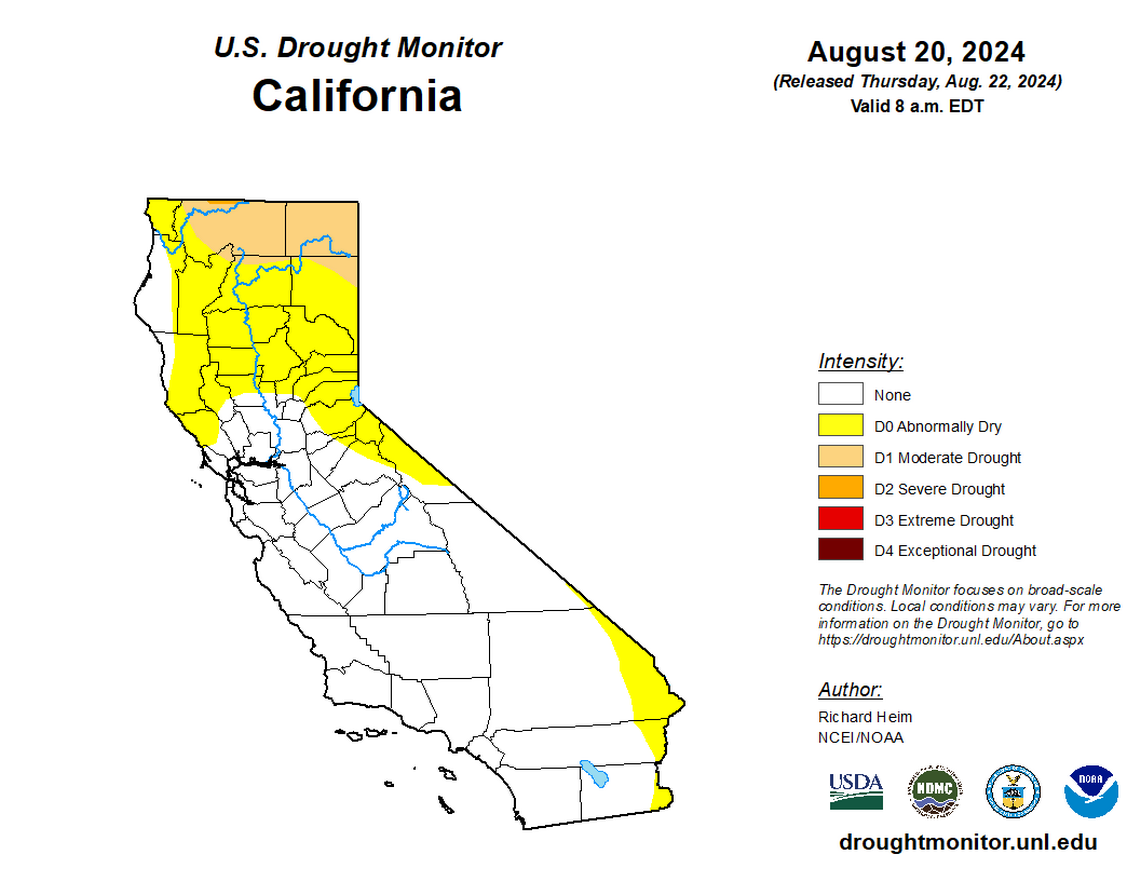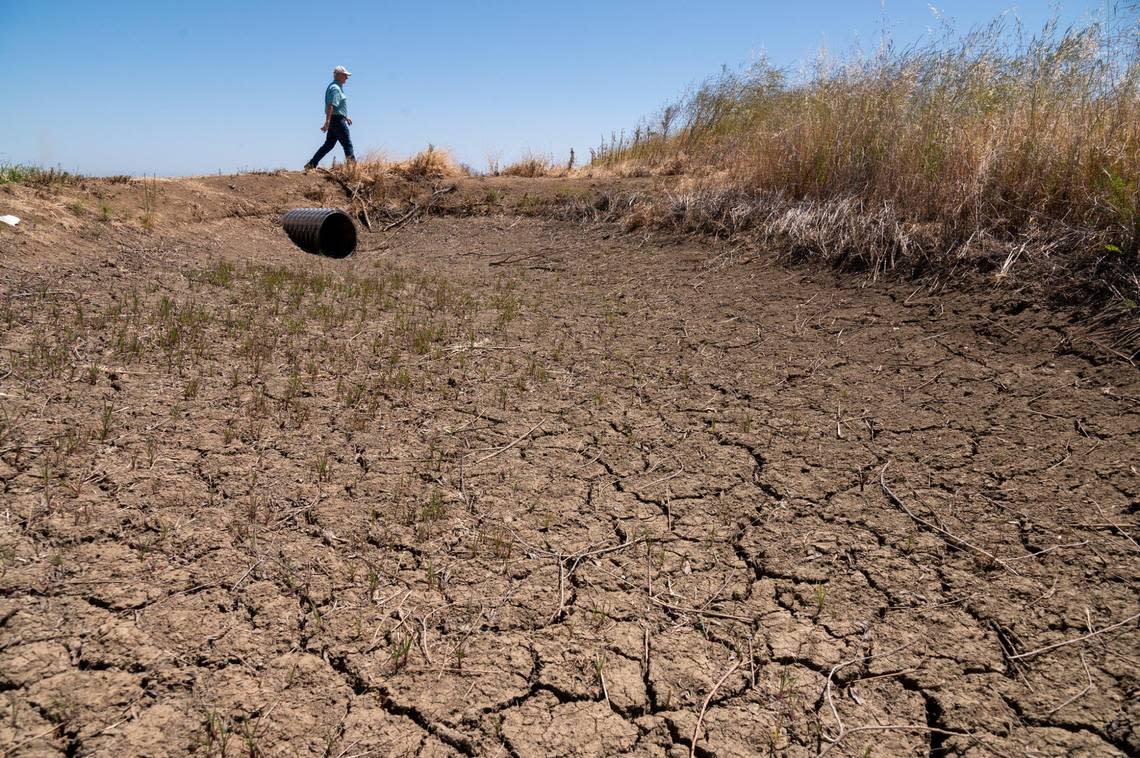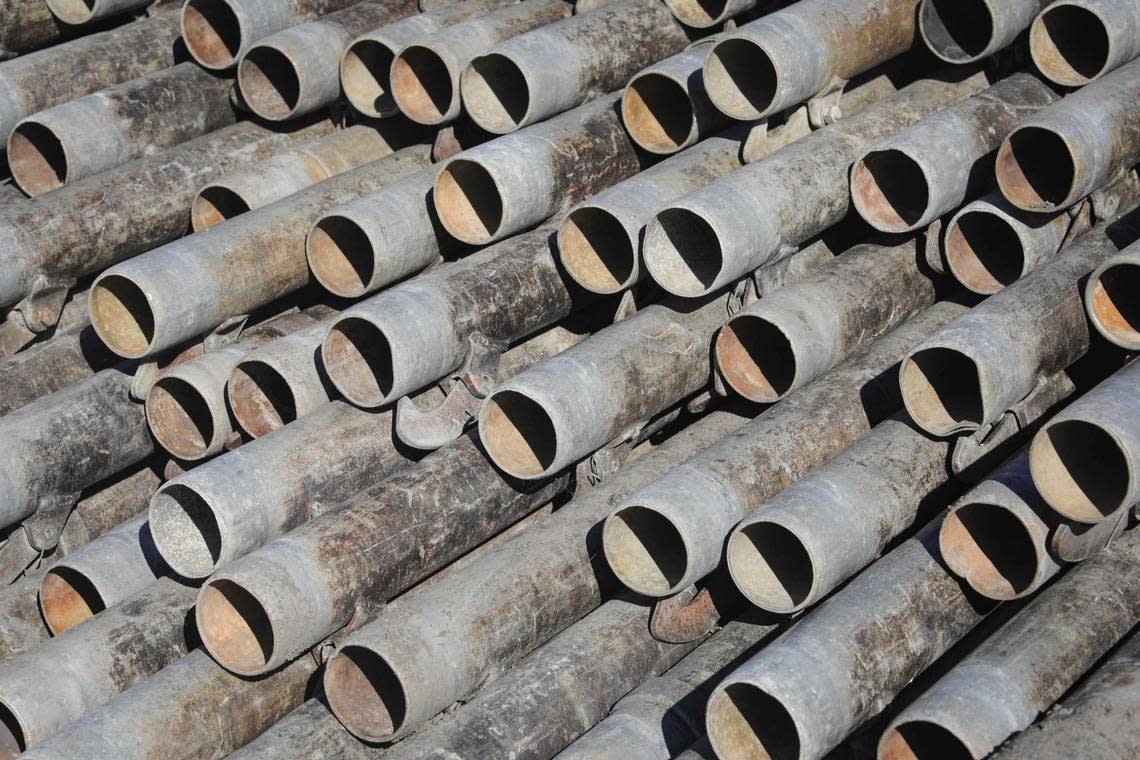A third of California is ‘abnormally dry,’ drought monitor says. Where are conditions worst?
About a third of California was “abnormally dry” on Thursday as parts of the state appear poised to return to triple-digit temperatures, according to the U.S. Drought Monitor’s latest update.
As of Thursday, areas of “moderate drought” were isolated to Northern California while a sliver of the state near the Oregon border was under “severe drought,” the Drought Monitor said.
“Abnormally dry” spots could be found in northern and central California as well as the southeastern corner of the state.
Here’s a look at drought conditions across California:
How much of California is in drought?
As of Thursday, about 7% of California was in drought, according to the Drought Monitor’s weekly map showing drought intensities across the nation.
That’s an increase of more than a percentage point compared to Aug. 13, when about 5.3% of the state was under drought conditions, and more than 6.3% on July 9 when drought conditions returned to the state.
About 6.9% of California was under moderate drought conditions as of Thursday and 0.1% was under severe drought conditions, the map indicated.

The drought-affected area covers all of Modoc County, most of Siskiyou County and a portion of Lassen County, according to the Drought Monitor map.
Meanwhile, 33.4% of California was battling abnormally dry conditions as of Thursday, the Drought Monitor said.
That included much of the Central Valley and the wider Bay Area as well as parts of Imperial, Inyo, Riverside and San Bernardino counties, the drought map indicated.
Although recent rains and cool temperatures have tamped down drought conditions in some areas of the United States, a lack of precipitation continues to “dry out soils across large parts of the West,” researchers wrote in a weekly national drought summary.
“Contraction of abnormal dryness or drought occurred in a few parts of New Mexico, Utah and Montana, but drought or abnormal dryness expanded in the Pacific Northwest, California and Nevada,” the researchers said.

What is California’s drought status?
As of Thursday morning, an estimated 72,714 California residents were living in drought conditions, according to the U.S. Drought Monitor.
Since October, the state has been free of “extreme” and “exceptional” drought conditions.

What’s next for the state?
Dry, hot weather could worsen drought conditions in California in the coming months, early forecasts indicate.
According to the Old Farmer’s Almanac, all of California will see above-average temperatures this fall, The Sacramento Bee reported previously.
Temperatures are expected to be above normal for most of California for the months of September to October and November, according to a long-range forecast by the National Oceanic and Atmospheric Administration’s Climate Prediction Center, although they could drop below normal along the coast.
The Climate Prediction Center said that parts of California may see below-normal rain from September through November.
Areas south of the San Francisco Bay Area will likely have below-normal precipitation, the center said, while the region north of the Bay Area has an equal chance of having below or above-normal rain.
Have a question about life in California?
How to California — a guide to help you live, work and enjoy life in the Golden State, is here to help.
We’ll answer your questions — big and small — about state laws, history, culture, recreation and travel.
Ask your questions in the form below (can’t see it? Click here) or email howtocalifornia@mcclatchy.com.






